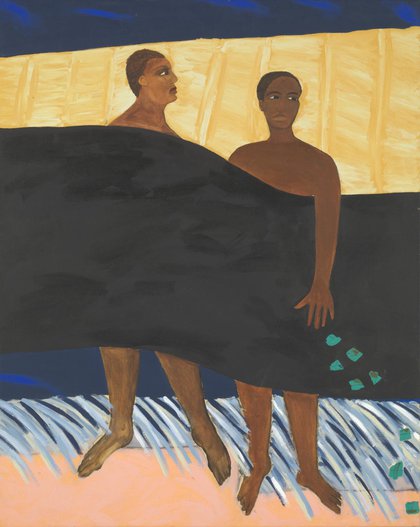Discover the intimate portrayal of women in Lubaina Himid's paintings
Over the past three decades, Lubaina Himid has consistently painted scenes of women together. Her characters are often presented in close pairs, quietly involved in interactions that the artist describes as both complex and ordinary.
This display features Freedom and Change 1984, Himid’s earliest work to depict this subject, alongside more recent work. It traces the way her paintings have explored the intimacy of relationships between women and their longing to connect through dialogue. Even when no human forms are present in her work, Himid uses pattern and colour to communicate emotion. Himid studied Theatre Design and was raised by her mother who was a textile designer. She has said: ‘I am constantly exploring the notion that textile design could be a secret and yet visible language between women.’
Himid’s paintings often respond to omissions in Western art history, in which, she explains, ‘there was only one story and ... the black woman never spoke’. The artist has said: ‘When depicting women together in paintings, you automatically, whatever you do, expose them to the history of the male gaze. So in order to give them agency you need to ask them to stare out together towards that gaze in a very direct way.’ Himid paints for an audience of other Black women in an effort to create images where ‘we can see ourselves’.
Lubaina Himid was born in Zanzibar, Tanzania in 1954. She lives and works in Preston, Lancashire. In 2017 she won the Turner Prize.
Curated by Laura Castagnini
Tate Britain
The women are always talking, sometimes to each other

